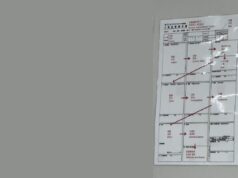By Bryan Lund:
For the full article, click here for a PDF file
The Lean toolbox is brimming with attractive tools and if you are like most Americans, you can't wait to get your hands on one of those shiny new gadgets and show it off to the neighbors. The problem with tools is that we get wrapped up in what they look like, not in the purpose of having the tool in the first place. Following is an example of where using a “lean tool” has gone bad. In this case, the 5 Why tool was put to work, and nothing happened, but was on display for the neighbors. Let's take a look at why good intentions went awry.
First, a quick glimpse of the picture: a group is in the middle of a kaizen event and someone says there is a chronic problem with a machine. A facilitator of the group says, “Let's use the 5 Why tool to solve this problem”, which the group proceeded to do. Following is the line of questioning and answers provided during the 5 Why session:
Problem: The parts carrier doesn't slide on the belt.
Why do the carriers not move along the belt?
The belt is caked with grime.
Why is there grime on the belt?
We are using silicone instead of light oil. Silicone builds up on the belt and attracts grime.
Why are we using silicone?
We need extra lubricant and silicone works for that. We normally wouldn't use silicone.
Why do we need extra lubricant?
There is a problem when the machine tries to screw the assemblies together.
Why is there a problem with screwing the parts together?
There is a problem with the threads, but we can't figure that out.
At this point, the group felt as if they had hit a dead end and threw the problem over the wall to engineering to solve. Fast forward 40 days.
This approach concerned me for several reasons. First, the group had a nice, stylish, flashy form created on the computer and dated 40 days prior to when we observed it on the machine. There was no status on the problem, and further discussion with the operators in the area yielded no other information. Another thing, the group literally stopped questioning at the fifth why. Problem solving sometimes requires multiples streams of questioning and certainly should never be limited to asking “why” only five times. Finally, it wasn't clear how a physical feature on the subassembly was causing grime to build up on the belt, thereby causing the carriers to stop on the belt. At first glance, it may be obvious that, “since the parts don't go together easily, we use more lubricant, which is transferred to the conveyor belt, causing grime to build up. This is basic 5S stuff!” Sadly, when we blindly using Lean tools we inadvertently reduce the credibility of a continuous improvement program.
For the full article, click here for a PDF file
About the author: Bryan Lund is a Lean Coordinator in the Global Lean Office for Energizer Battery Manufacturing. www.energizer.com. Bryan is also involved with the reintroduction of the WWII production improvement program, Training Within Industry, or, TWI. Many elements of TWI, notably Job Instruction Training, are fundamental to maintaining stability and improvements within the Toyota Production System. Learn more about TWI at our local SME #204 website: Training Within Industry
Please scroll down (or click) to post a comment. Connect with me on LinkedIn.
Let’s work together to build a culture of continuous improvement and psychological safety. If you're a leader looking to create lasting change—not just projects—I help organizations:
- Engage people at all levels in sustainable improvement
- Shift from fear of mistakes to learning from them
- Apply Lean thinking in practical, people-centered ways
Interested in coaching or a keynote talk? Let’s start a conversation.










On the surface, the concept of “5 Whys” seems so simple, people often laugh it off. However, as Bryan has shown, it is really one of the most powerful, and least understood, problem solving methods.
People often think “how could something so simple possibly help me solve this complex problem?” Well after they struggle for a little while, they see that it works, and they come to see the deeper meaning the method brings.
Problem Solving is some of the most under rated training out there. However, it is probably one of the highest returning investments in training any company can make.
When people practice and become good problem solvers, they no longer seek to hide their problems. They embrace them because they know they can solve any problem that comes their way. This is perhaps Toyota’s biggest secret weapon for improvement, and a big reason for their manufacturing and development success.
Another important aspect of good problem solving is that is casts the “lean tools” in a different light. People come to understand that all those tools are really countermeasures in a larger problem solving process. This brings the tools to life in a way that solves specific problems, rather than just using them to “get lean” because the boss said so.
Thanks Bryan for such a unique and helpful posting. How about one on TWI?